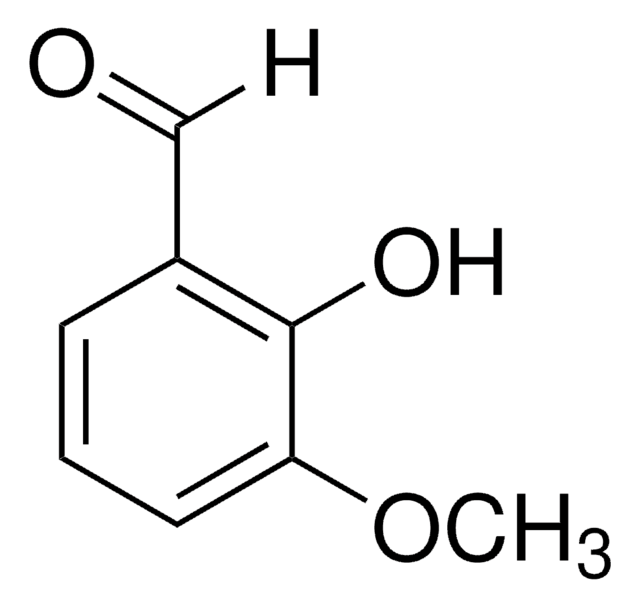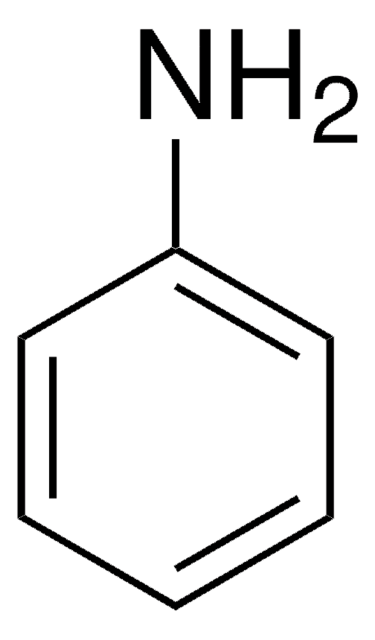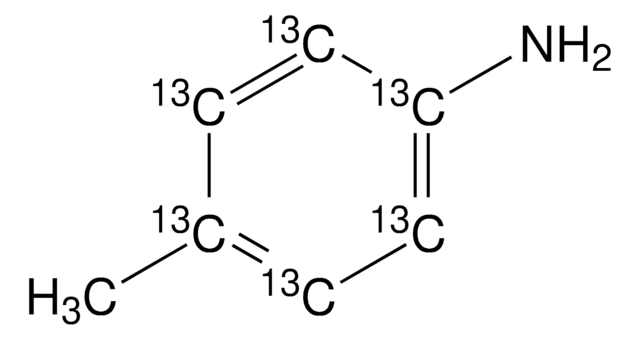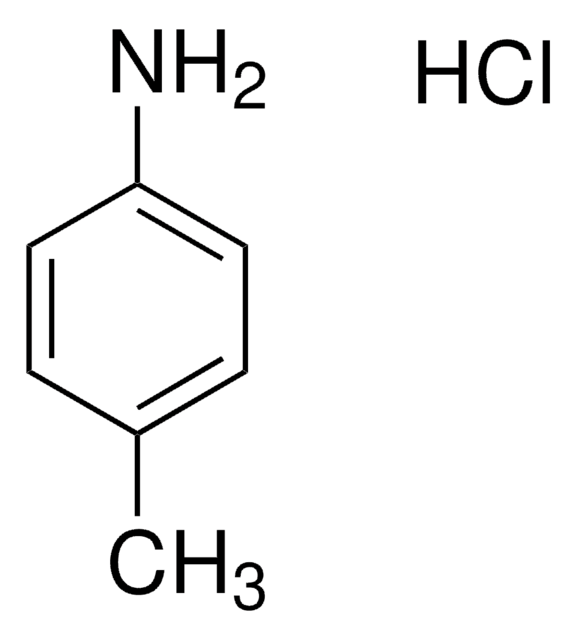236314
p-Toluidine
99.6%
Synonyme(s) :
4-Aminotoluene, 4-Methylaniline
About This Item
Produits recommandés
Densité de vapeur
3.9 (vs air)
Niveau de qualité
Pression de vapeur
0.26 mmHg ( 25 °C)
0.66 mmHg ( 38 °C)
Pureté
99.6%
Forme
crystalline
Température d'inflammation spontanée
899 °F
Limite d'explosivité
6.6 %
pH
7.8 (7 g/L)
Point d'ébullition
200 °C (lit.)
Pf
41-46 °C (lit.)
Solubilité
water: soluble 135 part(lit.)
acetone: freely soluble(lit.)
alcohol: freely soluble(lit.)
carbon disulfide: freely soluble(lit.)
diethyl ether: freely soluble(lit.)
methanol: freely soluble(lit.)
oil: freely soluble(lit.)
Densité
0.973 g/mL at 25 °C (lit.)
Chaîne SMILES
Cc1ccc(N)cc1
InChI
1S/C7H9N/c1-6-2-4-7(8)5-3-6/h2-5H,8H2,1H3
Clé InChI
RZXMPPFPUUCRFN-UHFFFAOYSA-N
Vous recherchez des produits similaires ? Visite Guide de comparaison des produits
Description générale
Application
- aromatic azo compounds
- bidentate Schiff base ligands via condensation with salicylaldehyde
Mention d'avertissement
Danger
Mentions de danger
Classification des risques
Acute Tox. 3 Dermal - Acute Tox. 3 Inhalation - Acute Tox. 3 Oral - Aquatic Acute 1 - Aquatic Chronic 2 - Carc. 2 - Eye Irrit. 2 - Skin Sens. 1A
Code de la classe de stockage
6.1A - Combustible acute toxic Cat. 1 and 2 / very toxic hazardous materials
Classe de danger pour l'eau (WGK)
WGK 3
Point d'éclair (°F)
188.6 °F - closed cup
Point d'éclair (°C)
87 °C - closed cup
Équipement de protection individuelle
Eyeshields, Faceshields, Gloves, type P3 (EN 143) respirator cartridges
Faites votre choix parmi les versions les plus récentes :
Déjà en possession de ce produit ?
Retrouvez la documentation relative aux produits que vous avez récemment achetés dans la Bibliothèque de documents.
Les clients ont également consulté
Notre équipe de scientifiques dispose d'une expérience dans tous les secteurs de la recherche, notamment en sciences de la vie, science des matériaux, synthèse chimique, chromatographie, analyse et dans de nombreux autres domaines..
Contacter notre Service technique











